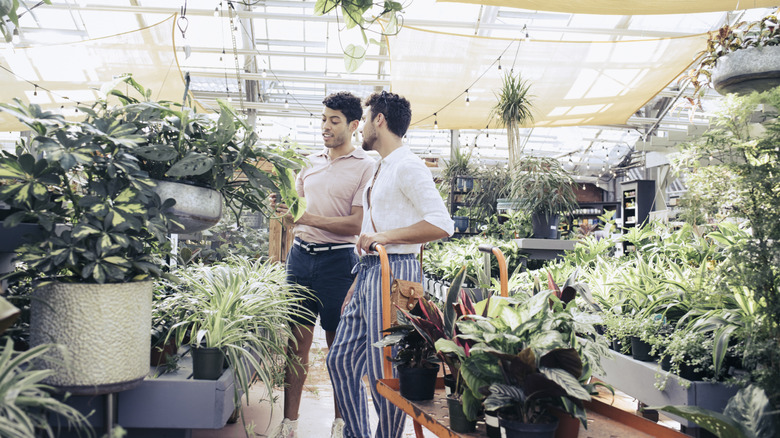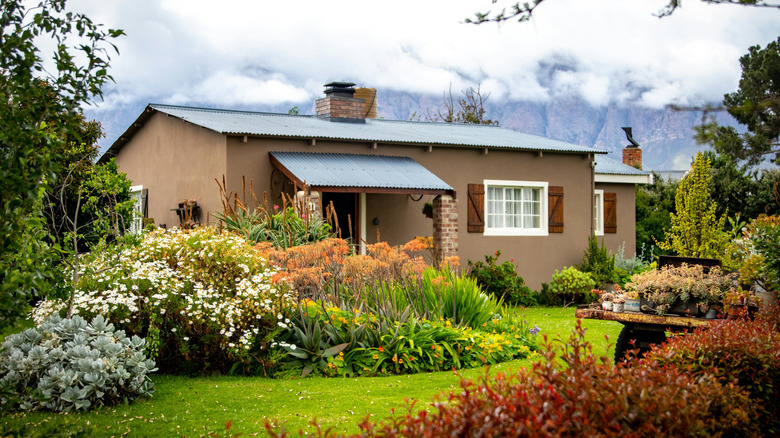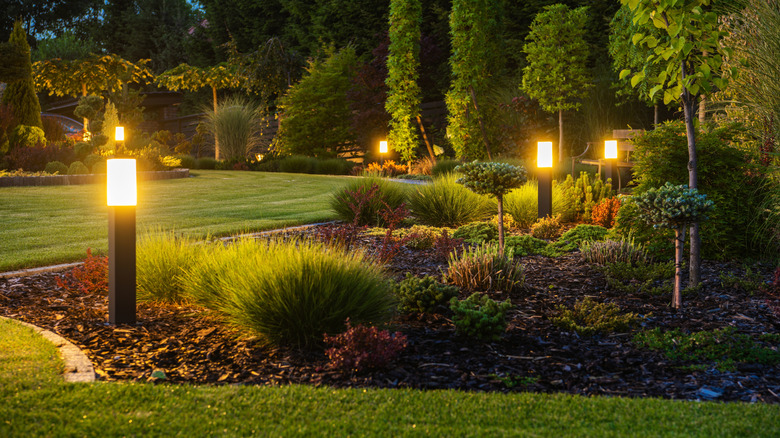The Once-Popular Garden Design Trend That's So Outdated Now
Have you ever noticed that both that tiny gardening supply company and the biggest box store in your town sell many of the exact same plants? Although the best landscaping is often well-established and appears to have been there forever, landscaping trends can be just as fickle as those in food, fashion, or furniture. For example, it's been impossible to miss the rise of the fiddle leaf fig and the ubiquitous Swiss cheese plant. Find it impossible to resist buying a new plant every time you set foot in your local nursery? You may be getting curious about the exotic garden trend you'll be seeing more in 2025. And, if you dream of achieving the old money aesthetic in your backyard, you're probably getting well acquainted with how to bring formality into your space with scale and color. But according to Juan Rangel, founder and landscape expert at Bloom Works Landscape, as more people ditch hyper-trendy plants while embracing subtle textures and cohesive groupings in the garden, symmetry is a once-popular garden design trend that's become extremely outdated today.
"Symmetrical gardens have certainly fallen out of favor," Rangel told House Digest during an exclusive interview. The expert attributed this to changing architectural and landscaping trends. "As we move further into contemporary design, we're seeing a growing preference for subtlety, asymmetry, and natural integration over rigid geometry," he explained. "Instead of structured, mirrored layouts, people now prefer gardens that feel organic, discreet, and less 'man-made'." Rangel added that materials that fit into their surroundings are more popular today because of "a conscious effort to design homes and landscapes that appear as though they're part of the land."
Native plants and subdued colors are more popular today
"Landscaping is taking center stage, becoming an extension of the home's architecture and often dominating the visual impression of the property," Juan Rangel said during his exclusive interview with House Digest. "While certain symmetrical features must remain for functional reasons, embracing asymmetry in plant selection, textures, and layout can soften the space and make it feel more organic and timeless." According to the landscaping expert, symmetrical garden designs look artificial compared to the more current trend of clustering plants into asymmetrical groupings. "Instead of alternating individual plants in a rigid sequence, designers are now combining multiple specimens of the same plant in groups to create broader textures and visual continuity." It's an approach you can easily take in your own garden.
Rangel also highlighted a strong preference for native plants. The landscaping expert acknowledged that choosing between native and non-native plants is more complicated than you think. "These [native] species introduce a different texture to the landscape — they tend to be more sparse, less uniform, and have an unpredictable growth habit," he admitted. "While this can pose design challenges, it aligns with the growing demand for authenticity and ecological integration." Using native plants sharply contrasts with those typically used in symmetrical gardens, like ornately clipped boxwoods or prolific bloomers like peonies that require heavy fertilizers.
Plant selection isn't the only garden aspect that's evolving. Rangel said color trends are also changing. "Bluish-gray and monochrome foliage are increasingly favored for their modern, minimalist look." He explained that muted tones are now more popular than vibrant greens, which he attributed to the ability of "subdued palettes [to] evoke a sense of calm."
Update your rigid garden with asymmetrical features and clustered plants
During his exclusive interview with House Digest, we asked Juan Rangel for some practical recommendations for homeowners who are concerned that their rigidly structured gardens look dated. The landscape expert was quick to point out that not all symmetry is inherently bad. "When symmetry is done simply and cleanly, it can create peace, order, and visual balance," he explained, adding that it can be easier to design and suits traditional-style homes extremely well. "It provides focal points and visual resting places. For those who prefer structure and visual balance, symmetry can be appealing and comforting," he said. Rangel added that landscapes often reflect and complement the symmetrical elements of a home itself and that if your architecture is balanced or mirrored, you'll need to introduce asymmetry thoughtfully to get the look just right.
"Phase out outdated plant species like geraniums, impatiens, or pansies, and instead use more modern and trending species such as Convolvulus, Leucadendron, or ornamental grasses," Rangel suggested. As you do, make sure to group clusters of the same color plants together instead of alternating them. The landscape expert also said you can introduce asymmetry by adding elements like a feature tree or oversized planter to one side of your house. He also recommended reducing the amount of lawn and adding height variation with bold, tall plants. According to Rangel, "Modern, asymmetrical designs are better suited to current architecture and lifestyle preferences. They feel more natural and dynamic, and they tend to offer a better return on investment — especially in contemporary neighborhoods."


